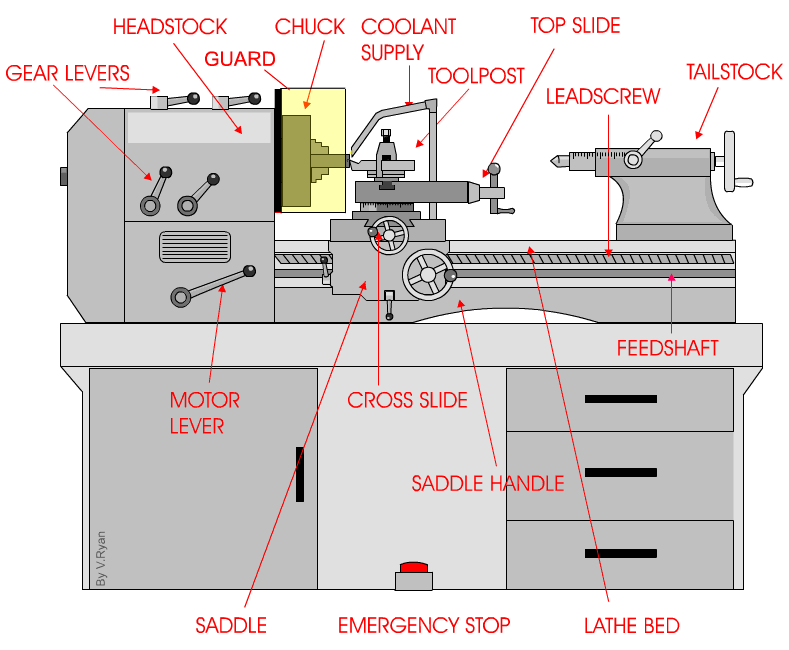| CLICK HERE FOR INDEX PAGE |
| THE CENTRE LATHE - HEALTH AND SAFETY |
| V. Ryan © 2009 |
| PDF FILE - CLICK HERE FOR PRINTABLE WORKSHEET |
|
The Centre Lathe is used to manufacture cylindrical shapes from a range of materials including; steels and plastics. A basic manual centre lathe is shown below with some safety information. |
 |
| 1. Before operating the centre
lathe, even for simple tasks, the operator must under go safety
instruction. This will ensure that he/she understands how to remain safe
when operating the machine. Only competent and capable engineers should
operate the lathe unsupervised. DO NOT OPERATE A MACHINE SUCH AS A LATHE,
IF YOU HAVE NOT RECEIVED SAFETY INSTRUCTION AND UNDERSTAND HOW TO USE THE
MACHINE. 2. The guard must be placed in position at all times, during the operation of the lathe. 3. The material to be machined, must be placed in the chuck securely. The chuck key must not be left in the chuck. If the lathe is switched on, the chuck key could ‘fly’ out, at high speed, injuring the operator. 4. The metal being machined should extrude from the chuck, only a small distance. The more metal extruding from the chuck, the more likely an accident will take place. 5. Micro switches should ensure that the machine cannot not be turned on, if the guard is not in position, or if the headstock door is opened. 6. The operator must wear safety goggles when using the lathe. Hands and fingers must be at a safe distance from rotating metal / parts. 7. All lathes should be fitted with emergency stop, foot or knee switches. 8. The machine must be set to operate at speeds and feeds recommended for the specific metal being machined. If the metal rotates too slowly/fast or the feed is too slow/ fast, accidents are likely to occur. 9. Appropriate coolants should be applied to the material being ‘turned’ on the lathe. |
| CLICK HERE FOR EQUIPMENT AND PROCESSES INDEX PAGE |